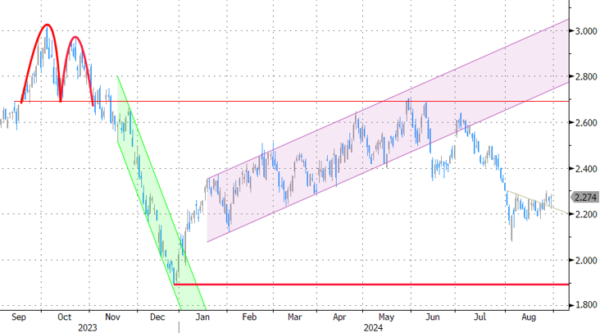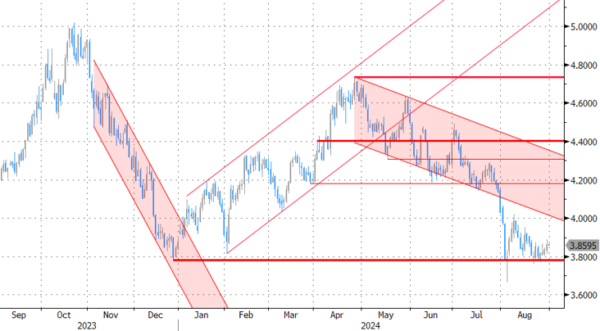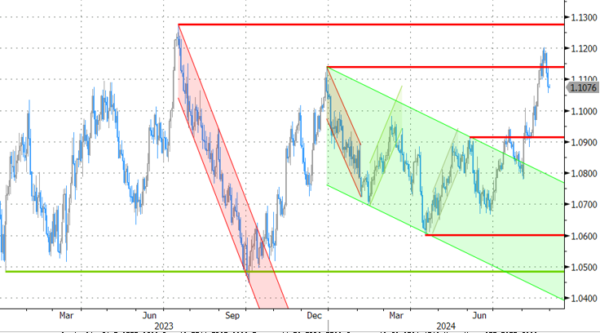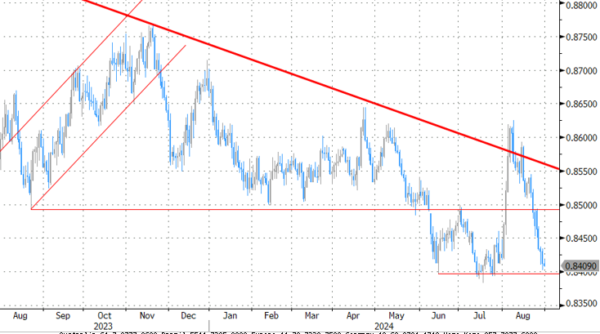Markets
Fixed income and FX markets yesterday had to cope with a divergent message from EMU and US data. German and Spanish August headline inflation slowed more than expected (German HICP -0.2% M/M and 2.0% from 2.6% vs 2.2% expected, Spain 0.0% M/M and 2.4% Y/Y from 2.9%). This provides some comfort for the ECB as it intends to further reduce policy tightening next month. However, the slowdown mainly came from lower energy prices. The progress in measures of underlying inflation was far less impressive (Spain core 2.7% from 2.8, Germany 2.8% from 2.9%, with still rather robust services inflation 0.4% M/M). Still, the data initially pushed EMU yields lower in a steepening move. However, global bond market momentum changed after the publication of US data. US Q2 GDP growth was upwardly revised from 2.8% Q/Qa to 3.0% due to strong personal consumption (2.9% from 2.3%). Weekly jobless claims also held a relatively low 231k. The Q2 GDP revision is old news but was enough for yields to close 2-3 bps higher across the curve. German yields reversed part of the initial decline though the 2-y yield still lost -2.8 bps. The 30-y added 2.1 bps. After recent dollar weakness, softer EMU CPI data this timed triggered a correction of the euro. EUR/USD dropped from the 1.1140 area to close at 1.1077. DXY rebounded from 101.00 to 101.34, but gains in the likes of USD/JPY (close 145) were modest. Equities initially also enjoyed some reflationary dynamics (EuroStoxx 50 +1.08%). US indices also opened with a constructive momentum, but mostly couldn’t hold on to initial gains (Nasdaq -0.23%). The Dow (+0.58%) finished at a new record. Markets for now apparently embrace a favourable (US) soft landing scenario.
This morning, Asian equities show broad-based gains with China outperforming. The yuan extends its comeback from earlier this month with USD/CNY testing the end-December low. The yen trades little changed after higher than expected Tokyo CPI data (USD/JPY 144.9). Later today, EMU August flash CPI probably will confirm yesterday trends from Germany and Spain (headline expected at 0.2%M/M and 2.2% Y/Y, core 2.8% from 2.9%, risks for downside ‘surprise’). With 3 additional 25 bps ECB rate cuts at each of the remaining meetings this year still not fully discounted, there is still room for some further decline in yields at the short end of the EMU yield curve. This also might trigger some further euro correction ST. In the US, the July income and spending data and the PCE deflators will be published. For the latter, a 0.2% M/M price dynamics is expected. Even in case of a mild soft surprise, we don’t expect a big market reaction with already 100 bps of cumulative Fed rate cuts discounted for this year. US markets are heading for a long weekend (Labour day). The focus will turn to next week’s key ISM’s and US labour market data. In this respect, we don’t change our call yet for the dollar to stay rather weak in the run-up the September Fed meeting.
News & Views
Tokyo inflation, the closely watched frontrunner of national inflation (September 20 release) put an October rate hike (updated GDP/CPI forecasts contrary to September meeting) by the Bank of Japan on the table. The central bank’s preferred gauge, CPI ex. fresh food, rose by 0.5% M/M with the Y/Y-figure unexpectedly accelerating from 2.2% to 2.4%. Headline inflation increased by 0.6% M/M and 2.6% Y/Y, matching the highest level YTD. Details showed goods inflation increasing by 0.8% M/M and services inflation rising by 0.3% M/M with sharper increases in costs of eating out, household services and entertainment driving the latter. While some of the inflation pick-up was the result of one-offs and base effects, it does not change the picture of a broad upswing in (service) prices. This bolsters the case for a further, be it gradual policy normalization by the Bank of Japan. The BoJ’s July hike came partially unexpected and helped cause the early August market riot, prompting some soothing comments from the central bank afterwards. Money markets therefore don’t expect much from the September 20 meeting and expect the next rate hike by December at the very earliest. Japanese bond yields trade little changed today as does the yen. USD/JPY oscillates around opening levels just south of 145.
Graphs
GE 10y yield
The ECB cut policy rates by 25 bps in June. Stubborn inflation (core, services) make follow-up moves less evident. Markets nevertheless price in two to three more cuts for 2024 as disappointing US and unconvincing EMU activity data rolled in, dragging the long end of the curve down. The move accelerated during the early August market meltdown.
US 10y yield
The Fed in its July meeting paved the way for a first cut in September. It turned attentive to risks to the both sides of its dual mandate as the economy is moving to a better in to balance. Markets tend to err in favour of a 50 bps lift-off. The pivot weakened the technical picture in US yields with another batch of weak eco data pushing the 10-yr sub 4%. Powell at Jackson Hole didn’t challenge markets’ positioning.
EUR/USD
EUR/USD moved above the 1.09 resistance area as the dollar lost interest rate support at stealth pace. US recession risks and bets on fast and large (50 bps) rate cuts trumped traditional safe haven flows into USD. EUR/USD 1 1.1276 (2023 top) serves as next technical reference.
EUR/GBP
The BoE delivered a hawkish cut in August. Policy restrictiveness will be further unwound gradually on a pace determined by a broad range of data. The strategy similar to the ECB’s balances out EUR/GBP in a monetary perspective. Recent better UK activity data and a cautious assessment of BoE’s Bailey at Jackson Hole are pushing EUR/GBP lower in the 0.84/0.086 range.
















